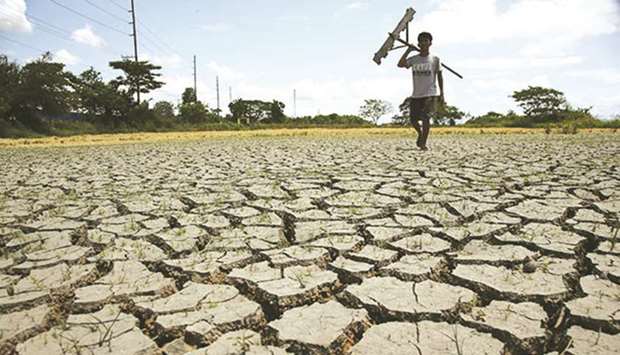The El Nino dry spell might last up to June, delaying the onset of the rainy season, according to the Philippine Atmospheric, Geophysical and Astronomical Services Administration (Pagasa).
Pagasa Deputy Administrator Flaviana Hilario said the forecast indicated the onset of the rainy season toward late June instead of the usual late May to early June.
“Pagasa’s monitoring and forecast show that El Nino will continue until June of 2019.
And the implication is, we are expecting a slight delay in the onset of our rainy season,” Hilario said at a press conference yesterday.
Hilario told Filipinos to expect a “full-blown” El Nino next month, given the length of significant rainfall reduction in most parts of the country, which will be on its fifth month by the end of March.
“Our climate is now getting hotter and drier as a result or impact of the ongoing El Nino,” Hilario said. “Air temperatures are now increasing as we approach the dry season and the impacts of El Nino are expected to become severe,” she added.
Pagasa expects 10 provinces to be classified under meteorological drought by the end of March.
These provinces are Ilocos Norte, Ilocos Sur, La Union, Occidental Mindoro, Oriental Mindoro, Palawan, Zamboanga del Sur, Zamboanga Sibugay, Maguindanao and Sulu.
A total of 41 provinces may be classified under a dry spell by the end of March.
In Luzon, these are Abra, Benguet, Kalinga Apayao, Mountain Province, Panagasinan, Cagayan, Bataan, Nueva Ecija, Pampanga, Tarlac, Zambales, Metro Manila, Batangas, Cavite, Laguna, Quezon, Marinduque, Romblon, Albay, Camarines Norte, Camarines Sur, Catanduanes, Masbate and Sorsogon.
In the Visayas, a dry spell is expected in Aklan, Antique, Capiz, Iloilo, Negros Occidental, Negros Oriental, Biliran, Eastern Samar, Leyte, Northern Samar and Western Samar.
In Mindanao, a dry spell is expected in Zamboanga del Norte, Misamis Occidental, Dinagat Islands, Surigao del Norte and Tawi-Tawi.
A total of 21 provinces may also be declared under dry condition by the end of March.
Pagasa Deputy Administrator for Operations and Services Landrico Dalida Jr said that even with El Nino, typhoons were still expected to enter the country — fewer in number but stronger in intensity.
“Usually during El Nino, hot temperature in the Pacific causes strong evaporation that could lead to stronger typhoons,” Dalida said.

A teenager walks along a parched rice field in Baliuag, Bulacan province.


